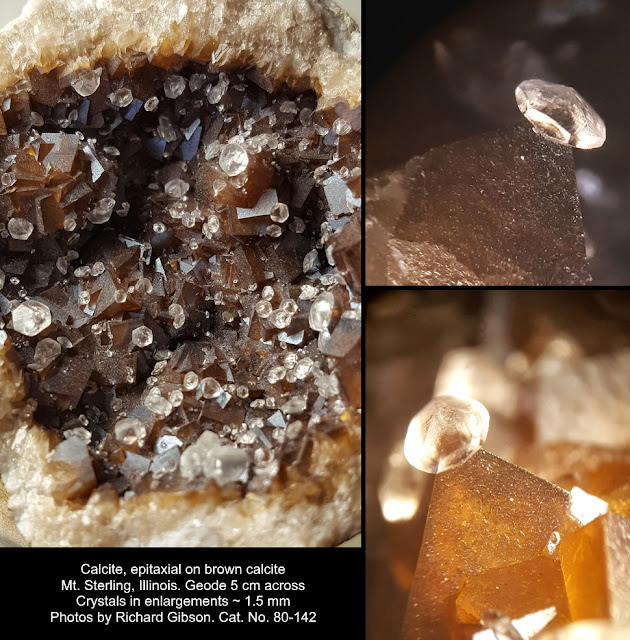Epitaxy, from
Greek words meaning “upon” or “above” and “ordered arrangement,” in minerals
means crystals of one (or the same) mineral growing in a particular
crystallographic position on another (or the same) mineral. It happens because
the molecular spacings and orientations happen to be similar, allowing, even
encouraging the crystal structure of the second, later mineral to mesh with
that of the first. Some mineralogists might say that epitaxy requires the two
minerals to be different minerals, but I do not – just two distinct generations
of crystallization.
My example here is calcite, calcium carbonate
– the sharp brown crystals are rhombohedrons, and the stuff is probably brown
because it may be slightly iron-bearing (but it’s not siderite, iron carbonate).
The clear crystals sit preferentially upon the corners of the rhombohedrons.
I’m pretty sure, but because calcite makes a myriad of crystal forms I’m not
certain, that the rhombohedral corner of the brown crystals represents the
basal pinacoid position in those crystals, and the complex saucer-like
colorless second-generation crystals are poised there on their own basal
pinacoids. The two pinacoid surfaces have the same molecular geometry, so the
two different generations of crystals – brown and colorless – joined there.
The
colorless crystals show a bunch of different forms, prisms, rhombohedrons, and
probable scalenohedrons, along with the likely pinacoids.
This is all in a geode about 5 centimeters
across, from Mt. Sterling, Illinois. The little crystals in the photo enlargements
are about 1.5 millimeters across. I actually have both halves of this geode,
although they were acquired from different dealers at different mineral shows a
year or so apart.
—Richard I. Gibson


No comments:
Post a Comment